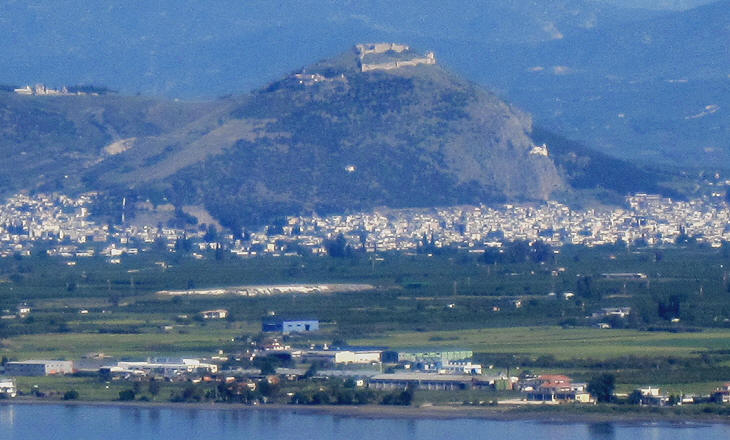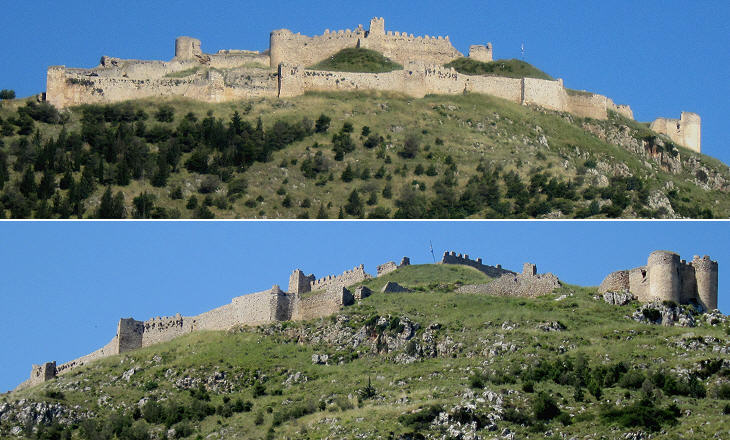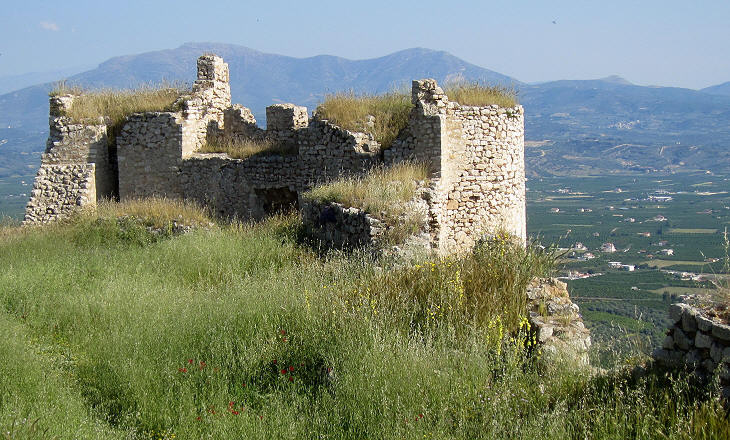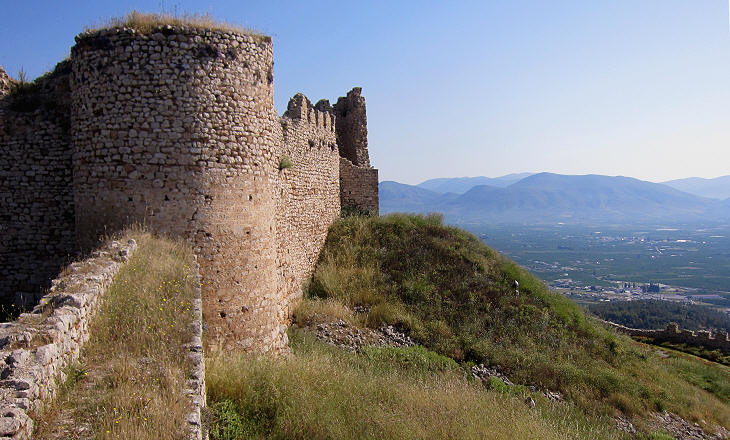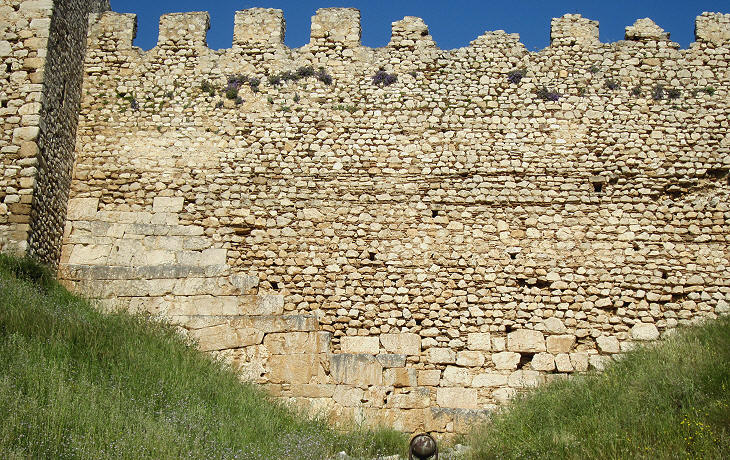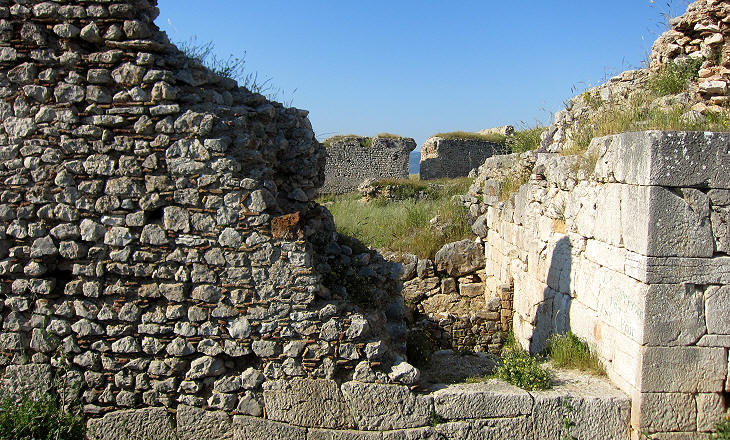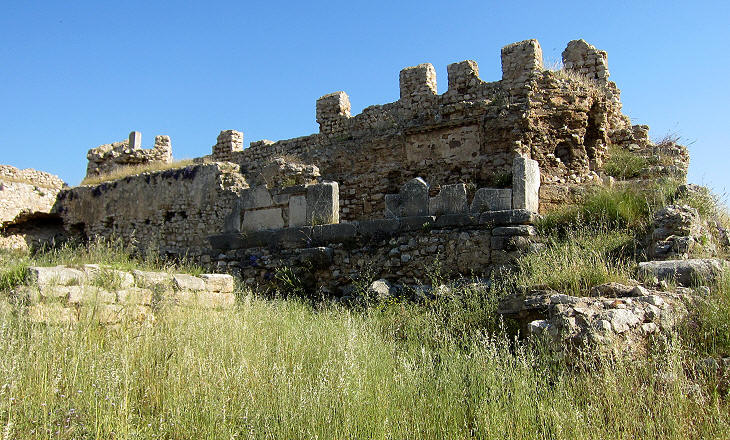  What's New! Detailed Sitemap All images © by Roberto Piperno, owner of the domain. Write to romapip@quipo.it. Text edited by Rosamie Moore. Page revised in November 2011. |
 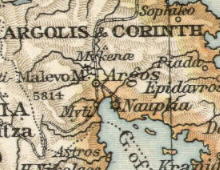 Argo (Argos) Argo (Argos)
The ancient city of Argos played a major role in the development of an early Greek civilization which is called Mycenaean after the artefacts which were discovered at Mycenae in 1876. The town was located at the foot of an isolated high hill at the centre of a plain and not far from the sea.
The main acropolis of the town was located at the top of the hill. During the VIth century the Byzantines turned the acropolis into a small fortress (today known as Larissa Castle) which was visible from a great distance. In 1204 the Frank knights who participated in the Fourth Crusade conquered Constantinople and then partitioned most of the Byzantine Empire among themselves. The Peloponnese was assigned to Geoffrey I of Villehardouin, who was helped in establishing his rule on the region by Othon de la Roche, Duke of Athens. Argos and the nearby port of Nauplia were given to Othon de la Roche as a separate fiefdom of the Principality of Achaea, the name given to his possessions by Geoffrey of Villehardouin. The fiefdom was eventually acquired by the Enghien family who sold it to Venice in 1388.
The fortress is composed of the inner castle corresponding to the ancient acropolis and of a large enclosure surrounding it. It is mainly a medieval fortification with many towers of different shape; the northern side of the external walls was strengthened by two massive round towers.
In 1395 Argos was raided by the Ottomans and the Venetians repopulated the town by bringing in Albanians. The light cavalry of the Venetian army was made up of stradiotti, Albanian mercenaries, known for their unorthodox tactics and cruelty. In 1463 the Venetians surrendered Argos, but they were able to retain control of Nauplia until 1540. The Ottomans did not care to upgrade the fortifications of Argos to the new requirements brought about by the development of cannon. In 1686 they preferred to abandon the fortress to concentrate their troops in the defence of Nauplia, which was besieged by the Venetians.
During their occupation of Morea (Peloponnese) in 1686-1715 the Venetians embarked on a large program aimed at strengthening old fortresses such as those of Methoni and Koroni and building new ones such as that of Palamidi near Nauplia, but they did not significantly upgrade the fortress of Argo, nor did the Ottomans when they recaptured it, probably because it lacked access to a source of water.
At the outbreak of the Greek Independence War in 1821 Argos and its fortress soon fell into the hands of the rebels. In July of the following year a large Ottoman army entered the region and laid siege to the fortress, but the Greeks preferred to sneak out of it at night. During this event and a second similar episode which occurred a few years later the fortress was damaged. As its military importance was low in the context of modern warfare it was abandoned (and it still is).
Excerpts from Memorie Istoriografiche del Regno della Morea Riacquistato dall'armi della Sereniss. Repubblica di Venezia printed in Venice in 1692 and related to this page:
Introductory page on the Venetian Fortresses Pages of this section: On the Ionian Islands: Corfù (Kerkyra) Paxo (Paxi) Santa Maura (Lefkadas) Cefalonia (Kephallonia) Asso (Assos) Itaca (Ithaki) Zante (Zachintos) Cerigo (Kythera) On the mainland: Butrinto (Butrint) Parga Preveza and Azio (Aktion) Vonizza (Vonitsa) Lepanto (Nafpaktos) Atene (Athens) On Morea: Castel di Morea (Rio), Castel di Rumelia (Antirio) and Patrasso (Patra) Castel Tornese (Hlemoutsi) and Glarenza Navarino (Pilo) and Calamata Modon (Methoni) Corone (Koroni) Braccio di Maina, Zarnata, Passavà and Chielefà Mistrà Corinto (Korinthos) Argo (Argos) Napoli di Romania (Nafplio) Malvasia (Monemvassia) On the Aegean Sea: Negroponte (Chalki) Castelrosso (Karistos) Oreo Lemno (Limnos) Schiatto (Skiathos) Scopello (Skopelos) Alonisso Schiro (Skyros) Andro (Andros) Tino (Tinos) Micono (Mykonos) Siro (Syros) Egina (Aegina) Spezzia (Spetse) Paris (Paros) Antiparis (Andiparos) Nasso (Naxos) Serifo (Serifos) Sifno (Syphnos) Milo (Milos) Argentiera (Kimolos) Santorino (Thira) Folegandro (Folegandros) Stampalia (Astipalea) Candia (Kriti) You may refresh your knowledge of the history of Venice in the Levant by reading an abstract from the History of Venice by Thomas Salmon, published in 1754. The Italian text is accompanied by an English summary. Clickable Map of the Ionian and Aegean Seas with links to the Venetian fortresses and to other locations (opens in a separate window) |
